.
Hello October! The
month in which our northern hemisphere peeps are definitely in autumn and
looking forward to Halloween, while here in the south the new green of spring
is everywhere and the days are definitely longer, but there’s still snow on the
mountains.
.
All in all it sounds
rather magical, whether looking forward to the eeriness of Samhein or the
bonfires of Beltane—which brings me to my theme of magic in fantasy fiction.
.
The unifying theme of
this month’s trio is the Magic of Fantasies that take place in worlds that are
SF-nal in premise. Enjoy! J
 |
.
Magic In Fantasy: The Magic Of SF-nal Worlds
 |
The Gate Of Ivory by Doris Egan
The Gate of Ivory is one of those wonderful works where the premise
of the worldbuilding is SF-nal, but the tale itself is pure fantasy.
.
The heroine, Theo
(Theodora), finds herself stranded on the planet called Ivory, where magic is
real and assassination a fact of everyday life. Her fortunes become entangled
with that of sorcerer, Ran Cormallon, and the internal and external struggles
of the Cormallon clan. As you may suspect from the synopsis, The Gate of Ivory is fantasy with
romantic elements.
.
I have always loved
Theo’s “voice” and her character, who is smart, stubborn, and definitely not a
pushover. Her entry into the magic of Ivory is through the tarot, but the in
addition to fully fledged sorcery, magic ranges from touchstones that capture
memories, to formal, sorcerous duels.
.
There is also a great
backstory, involving space travel and genetic manipulation, as to why Ivory is
the only known world where magic is real, and a logical rationale to how its
magic works.
.
Above all, though, it’s a fun and adventurous, as well as a magical
fantasy, and one that I believe still reads well in 2021, thirty-two years
after first publication. J
Trail of Lightning by Rebecca Roanhorse
 |
Rebecca Roanhorse’s Trail
of Lightning also has a SF-nal setting, in this case a post-climate
change world in which Dinétah, the Diné or Navajo nation, has survived but is
now, by an act of traditional magic, walled off from the rest of the USA.
Within its walls, the traditional gods, but also the monsters of the Diné have
woken to life.
.
The protagonist, Maggie Hoskie, is a monster hunter, with the ability to
draw on family powers that enhance her ability to go toe-to-toe with monsters
and demons. As well as her trusty double-barrel shotgun and seven-inch Böker knife, Maggie must also
use traditional magic to overcome her mythic and supernatural opponents.
.
Maggie is feisty, savvy, and tough enough to punch well above her
weight, especially when fighting monsters involves negotiating the machinations
of gods such as Coyote and Neizgháni, the Monster Slayer. She also has a
worldweariness that I felt was a really believable characteristic with someone
whose dayjob is not only fighting monsters, but dealing with the consequences
of their rampages.
.
The story is imbued with the magic and medicine, as well as the
monsters, of Diné legend, as well as being tale-spinning in the tradition of
both Buffy and Mad Max’s Furiosa.
.
Harrow the Ninth by Tamsyn Muir
 |
Last year, I discussed
the worldbuilding in Tamsyn Muir’s Gideon
the Ninth, which was published as “space fantasy.” Effectively, the world
is one of an interplanetary empire spanning a 10,000-year period, but the story
is not only one swashbuckling fantasy, in which cavaliers duel with rapiers and
broadswords, but imbued by its magic system, which is entirely necromancy.
.
Harrow the Ninth, published 2020, is the second instalment and
follows the necromancer, Harrow (Harrowhark) who has ascended to lyctorhood.
Although the story takes place in space, rather than on Gideon’s ruined planet,
it’s still fantasy and necromancy is still the raison d’être of the story.
.
Where Gideon was
extroverted, Harrow is an introvert par excellence, a natural circumstance
compounded by necromantic plots-within-plots. The magic of Harrow the Ninth
also delves into dream magic and the alternate realm of The River, which is
both an astral plane and afterlife, inhabited by ghosts. The ghosts include the
dead from Gideon and also revenant spirits
of necromantically destroyed planets, bent on a vengeance quest…
.
Harrow the Ninth, perhaps reflecting the character of Harrow,
is more complex and arcane than Gideon,
but if you love bones and skeletons, corpses and ghosts, and the magic of the
tomb, whether locked or unlocked, you’ll still be hooked.
.
~*~
Previous Posts In The “Magic In Fantasy” Year:
.January 1: Happy New Year – Ushering In A Year of Friends, Fellow Authors, & Magic Systems
January 5: An Interview with AK Wilder – Talking Magic In Her New-Out Crown Of Bones (AMASSIA #1)
February 1: An Interview with T Frohock – Talking Magic In A Song With Teeth & The LOS NEFILIM Series
March 1: An Interview with Courtney Schafer – Talking Magic In The "Shattered Sigil" Series
April 1: An Interview with Kristin Cashore –Talking Magic In Winterkeep & The "Graceling Realm" Series
.
May 1: An Interview With Lee Murray – Talking Magic, the Supernatural & Horror
June 1: An Interview With Amanda Arista – Talking Magic In the MERCI LANARD & DIARIES OF AN URBAN PANTHER Series
July 1: The Magic of Magic In Fantasy -- & A Solstice Shift
August 1: More Magic In Fantasy: Lighting The Spark
Helen Lowe's first novel, Thornspell (Knopf), was published to critical praise in 2008. The second,The Heir of Night (The Wall Of Night Series, Book One) won the Gemmell Morningstar Award 2012, and the sequel, The Gathering Of The Lost, was shortlisted for the Gemmell Legend Award in 2013. Daughter Of Blood (Book Three), was published in 2016 and Helen is currently completing the final novel in the series. She posts regularly on her “…on Anything, Really” blog, monthly on the Supernatural Underground, and tweets @helenl0we


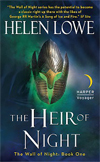
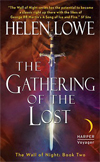
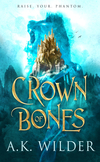
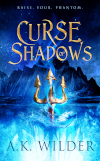
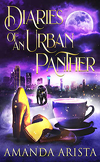
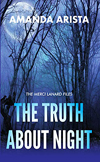

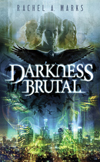
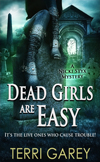
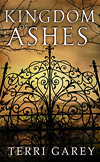
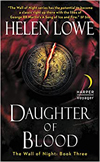
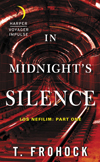

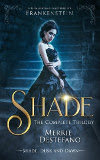

No comments:
Post a Comment